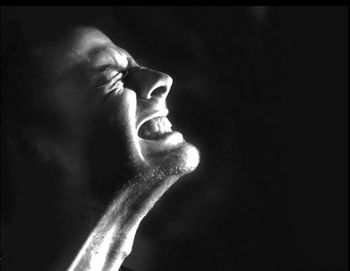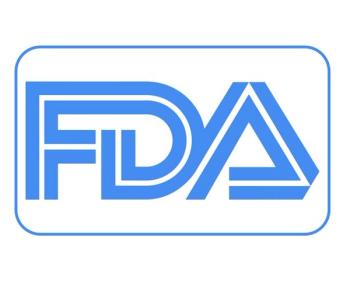
Chest Pain: Is It Life-Threatening, or Benign?
Ruling out coronary artery disease is the first step in assessing chest pain.
Chest pain demands your immediate attention: does it represent a life-threatening condition or a benign one? The differential diagnosis is extensive, and the severity of pain is not necessarily related to the gravity of its cause (Table). Thus, expedient evaluation, diagnosis, and treatment are needed.
When you assess chest pain, the first concern is to exclude coronary artery disease (CAD). We present an algorithm to help you distinguish among the possible causes of a patient's pain and decide when an invasive test is needed. Because the history and physical examination are so important, we begin with several key diagnostic points.
THE STARTING POINT
Although a wide variety of laboratory tests can help refine the differential diagnosis of chest pain, the history and physical examination remain essential. A systematic, meticulous history is crucial. Pay close attention to risk factors for CAD, such as family history, hypertension, diabetes, smoking, and hyperlipidemia. The quality, location, pattern of radiation, intensity, and duration of chest pain episodes are important. Be sure to ask about associated symptoms and factors that aggravate or alleviate the pain.
During the physical examination, check the blood pressure in both arms and the pulse in all extremities-particularly when aortic dissection is a possibility. The skin may reveal clues to the origin of pain. Vesicular erythema in the painful area, for instance, is indicative of herpes zoster; and xanthelasma or xanthomas in the tendons and arcus senilis in young persons suggest hyperlipidemia.
Palpation of the costochondral and chondrosternal junctions and thoracic muscles may reproduce the chest pain, thereby pointing to a musculoskeletal cause. Look for evidence of a pleural rub, consolidation, or congestive heart failure (CHF). Determine whether deep inspiration reproduces or exacerbates the pain.
The cardiac examination also offers important diagnostic clues. For example, a harsh, forceful systolic ejection murmur that radiates to the left upper sternal border suggests aortic stenosis. Increased intensity of the pulmonary sound usually indicates elevated pulmonary pressures.
While you are examining the patient's abdomen, try to elicit evidence of gallbladder disease or peptic ulcer. A check of the extremities may reveal signs of peripheral vascular disease, which is strongly associated with CAD.1
DIAGNOSTIC PEARLS
Angina pectoris
•Patients describe a pressing, constricting, or squeezing sensation-or simply "heaviness"-almost always in the central anterior part of the chest; discomfort above the mandible or below the epigastrium more likely has another cause.
•Pain most frequently radiates to the left arm, left shoulder, and neck; typically develops gradually during exertion but is also caused by stress and exposure to cold; usually lasts less than 5 minutes; and is unaffected by positional changes. It may occur after a meal or when the patient is at rest.
•Pain is relieved by use of sublingual nitroglycerin, although this finding has been recently questioned.2
•S3 or S4 may be heard during an anginal episode.
•Chest pain is unlikely to be caused by angina pectoris if the patient describes it as sharp or stabbing; if it lasts only a few seconds; or if it is reproducible with chest palpation, deep inspiration, or changes of body position.
•Elderly patients often present with shortness of breath as an anginal equivalent.
•Women and patients who have diabetes may also present with atypical symptoms.
Myocardial infarction
•Pain is similar to that of angina but more severe; lasts longer than 30 minutes; and is often accompanied by nausea, vomiting, diaphoresis, and shortness of breath.
•Nitroglycerin does not alleviate the pain.
•Patients may have risk factors for CAD.
•The presence of Q waves on an ECG may indicate previous myocardial infarction (MI).
•Transient development of ischemic ST-T changes during an episode of chest pain is specific for CAD.3
Pericarditis
•Pain lasts hours to days and is usually preceded by an upper respiratory tract viral infection.
•Pain is pleuritic and more left-sided than MI or anginal pain would be. It often radiates to the left shoulder, neck, and trapezius ridge; is commonly aggravated by deep inspiration, cough, or change in position; and is unaffected by exertion.
•Unlike anginal pain, discomfort may lessen when the patient sits up and leans forward.
•Pericardial rub may be heard and widespread ST-segment elevations may be seen on the ECG.
Mitral valve dysfunction
•A midsystolic click followed by a murmur indicates mitral valve prolapse.
•A new holosystolic murmur may indicate mitral valve regurgitation that is caused by papillary muscle dysfunction.
•Dynamic auscultatory maneuvers may assist with this diagnosis. For example, the murmurs of mitral valve prolapse and hypertrophic cardiomyopathy increase with the Valsalva maneuver and with standing; the murmurs associated with all other valvular diseases decrease with these maneuvers.
Aortic dissection
•Severe, persistent, lacerating pain begins suddenly, radiates to the back and lumbar region, and is unrelieved by change of position or nitroglycerin. It is frequently associated with hypertension.
•Pain may be associated with a new murmur of aortic insufficiency.
•Chest film may show widening of the mediastinum.
Pulmonary embolism
•Symptoms may resemble those of acute MI. There may be a sudden onset of pain, which is commonly associated with shortness of breath and sometimes with hemoptysis.
•With massive pulmonary embolism, pain is substernal; with smaller emboli, pain is more pleuritic and usually lateral.
•History and physical examination may include signs and symptoms of deep venous thrombosis, pulmonary embolism, hypercoagulable states, or evidence of pulmonary hypertension.
•The most common ECG change associated with pulmonary embolism is sinus tachycardia. ECG evidence of right ventricular strain, such as the classic S1Q3T3 pattern, may also be seen.
Pleural pain
•Sharp localized pain is intensified with deep inspiration or coughing.
•Parietal pleural irritation from an inflammatory process (such as a pleural effusion) or a pneumonic process (such as a pneumothorax or pneumonia) may cause pain.
•Auscultation may reveal a pleural rub, signs of consolidation, or CHF.
Musculoskeletal pain
•Chest film may demonstrate infiltrates or pleural effusions.
•Pain may last for seconds, hours, or days; frequently, it is reproducible by chest palpation or movement when the patient turns or twists the chest, shoulders, arms, or neck.
•The cause may be inflamed costochondral or chondrosternal articulation (Tietze syndrome); strained chest muscle; sprained chest ligament; subacromial bursitis; bursitis of shoulder or spine; ruptured cervical disk; or rheumatic diseases, such as rheumatoid arthritis, ankylosing spondylitis, or fibromyalgia.
•Look for a history of recent strenuous activity.
Cardiac syndrome X4
•Anginalike chest pain occurs in the setting of normal coronary angiography.
•The pathology is not clear but may be related to estrogen-deficient states and myocardial microvascular dysfunction.
•The pain is often severe and prolonged; it typically occurs in postmenopausal women.
•The diagnosis is often one of exclusion, but ECG and myocardial perfusion changes may be seen.
•The disorder has been associated with panic disorder and increased pain sensitivity.
•Patients usually have some objective evidence of ischemia, which eventually leads the physician to seek a definitive diagnosis through coronary angiography.
Herpes zoster
•Pain in a dermatomal distribution is exacerbated by light touch to the skin.
•Vesicular erythema is evident over the area of pain, but pain may precede skin findings by several days.
Esophageal chest pain
•Pain is triggered by exertion or emotion but relieved with nitroglycerin-a presentation similar to that of angina pectoris.
•Provocation by swallowing, an atypical relation with exertion, association with other esophageal symptoms, and relief with antacids suggest a motility disorder or gastroesophageal reflux disease.
GI disorders
•Peptic ulcer disease: pain increases about 1Z\x hours after meals and improves with antacids.
•Hiatal hernia: pain intensifies when the patient lies down.
•Gallbladder disease or pancreatitis: colicky pain and nausea usually start 1 to 2 hours after meals.
Psychological causes
•Pain that has an underlying psychological cause is common.
•Pain is rarely precipitated by exertion and is often associated with anxiety and hyperventilation.
•This type is difficult to differentiate from ischemic chest pain.
STRATEGY FOR SELECTING TESTS
Any screening strategy should focus on maximizing sensitivity with minimal risk. A positive screening test is usually followed by a more specific test that can provide prognostic information or direct therapy.
Cardiac enzyme measurement. Levels of numerous biomarkers are elevated in the setting of acute myocardial injury. Those most commonly used for diagnostic purposes include troponin (I or T), creatine kinase (CK), and CK-MB. Elevations in the levels of these markers provide both a diagnosis of and prognosis for myocardial injury.5 A single measurement of these markers is generally insufficient to evaluate for the presence of injury; however, the number and timing of further tests that are required have not yet been clearly defined.6
Exercise stress test. The overall sensitivity for CAD of this relatively low-cost screening method varies from 60% to 90%, and its specificity ranges from 70% to 90%.7,8 It is an excellent choice for patients whose resting ECGs show no abnormalities and for those who are able to exercise to reproduce symptoms. False-positive results of exercise stress testing tend to occur in persons whose resting ECGs indicate abnormalities (such as left bundle-branch block, left ventricular hypertrophy, or the effect of digitalis or other medications) and in patients who have Wolff-Parkinson-White syndrome.
Exercise stress testing often does not allow accurate localization or evaluation of the extent of myocardial ischemia. However, the degree of ST-segment depression correlates with an increase in the test's specificity. Finally, the best indicator of prognosis on an exercise stress test is functional capacity (ie, the number of metabolic equivalents achieved).
Perfusion stress test and exercise echocardiography. Stress test electrocardiography data are combined with regional perfusion and wall motion information, thus improving both sensitivity and specificity to above 90%.9-11 These techniques are indicated when a patient's baseline ECG shows ST-T changes and also when an exercise stress test result is suspected of being a false-positive.
The patient is encouraged to exercise to maximum effort on a treadmill or stationary bicycle. The radionuclide is injected 60 seconds before the test ends. The test ends when the patient is fatigued, when chest pain or dyspnea develops, or when the heartbeat exceeds 85% of the predicted rate. Images obtained shortly after the patient exercises are compared with images obtained at rest (Figure).
Exercise-induced perfusion defects that are reversible at rest indicate areas of ischemia; fixed perfusion defects are manifestations of scar tissue formation and represent MI.11
Exercise echocardiography compares left ventricular wall motion before and immediately after exercise. A new exercise-induced wall motion abnormality is consistent with ischemic disease. These tests are highly dependent on image quality, which may be poor in some patients (ie, those with a large body habitus or large breasts).
Induction of pharmacologic stress. This is an alternative for patients who are unable to exercise or to reach an adequate heart rate response. Dipyridamole and adenosine cause vasodilation of the coronary resistance vessels, and dobutamine is a positive inotropic agent.11 All are administered intravenously to increase coronary blood flow.
Nuclear imaging or echocardiography is then carried out to define perfusion defects or wall motion abnormalities in the distribution of coronary arteries. Do not give dipyridamole to patients who have asthma, unstable angina, or acute infarction. Studies that compare pharmacologic tests with imaging exercise tests reveal similar accuracy.8
Electron beam computed tomography (EBCT). This fast, reliable test for CAD is becoming more widely used. EBCT detects calcium in the coronary arteries, which is diagnostic of CAD.12 Current indications include:
•Adults aged 65 years or younger with atypical symptoms.
•Adults aged 65 years or younger who have an intermediate stress test result.
•Men between ages 45 and 65 and women between ages 55 and 75 with risk factors for CAD.
•Because a positive result on EBCT does not correlate with the degree of stenosis, further testing is indicated in this setting.
Coronary angiography.This test continues to be the gold standard for evaluating CAD.
Nuclear imaging or intracoronary Doppler flow measurement. These studies provide information on the functional significance of lesions of intermediate (40% to 70%)severity.13,14
New tests on the horizon. The advent of the 64-slice CT scan may herald the development of noninvasive coronary angiography. In addition, there are now numerous serum markers that correlate with risk of heart disease; these include C-reactive protein and myeloperoxidase. Further studies are needed to reveal the utility of these tests (if any) in the clinical setting.
EVALUATING CARDIAC CHEST PAIN
A simple diagnostic algorithm for chest pain of unknown origin is, unfortunately, difficult to develop. Nevertheless, information from the history and physical examination-along with other modifiers (eg, sex, age, and cardiac risk factors)-should enable you to classify the intensity of your suspicion of MI/ischemia as high, moderate, or low (Algorithm).
When we strongly suspect MI/ischemia, we proceed directly with angiography. When we have moderate suspicion, CAD must be ruled out before further evaluation is done. If the baseline ECG shows no abnormalities, an exercise stress test or EBCT may be performed. If there are abnormalities on the baseline ECG, patients should undergo some form of imaging with stress. If physical examination results suggest valvular heart disease (eg, aortic stenosis or mitral valve prolapse) or hypertrophic cardiomyopathy, transthoracic echocardiography can help you confirm the diagnosis.
EVALUATING NONCARDIAC CHEST PAIN
Once CAD, pericarditis, hypertrophic cardiomyopathy, and aortic stenosis have been excluded, search for noncardiac causes of chest pain. Esophageal disorders, including motility disorders and reflux, account for nearly 30% of cases of noncardiac chest pain.l Other common causes are musculoskeletal pain syndromes and psychological disorders. Reassurance in all these cases is important because of the excellent prognosis for persons with most causes of noncardiac chest pain.8,15-17
While the first test in the evaluation of esophageal dysmotility is usually a barium swallow, esophageal provocation tests with edrophonium or bethanechol and/or balloon-distention tests recreate motility-related chest pain in the laboratory. In most cases, however, results of these tests do not direct therapy. Ambulatory monitoring of esophageal pH and pressure can precisely define the cause of esophageal chest pain. Such investigations most commonly reveal acid reflux disease, not an esophageal motility disorder, as the cause of esophageal chest pain.
Acid-related symptoms can be managed successfully with antacids or proton pump inhibitors. Motility disorders are less amenable to treatment, but ambulatory monitoring may identify a subset of patients more likely to respond to smooth muscle relaxants.
Musculoskeletal causes of chest pain are usually diagnosed clinically and respond to NSAID therapy.
If you suspect pulmonary embolism, a peripheral vascular and pulmonary vascular workup is needed.
If aortic dissection is a consideration, techniques such as transesophageal echocardiography, CT, MRI, and angiography not only assist with the diagnosis but also help localize the dissection in case surgical repair is required.
Once you have ruled out CAD and musculoskeletal and esophageal causes of chronic chest pain, consider psychiatric disorders, such as anxiety, depression, somatization, and panic attacks. Refer patients for psychiatric interviews and psychological testing.
References:
REFERENCES:1. Hertzer NR, Beven EG, Young JR, et al. Coronary artery disease in peripheral vascular patients: a classification of 1,000 coronary angiograms and results of surgical management Ann Surg. 1984;199: 223-233.
2. Henrikson CA, Howell EE, Bush DE, et al. Chest pain relief by nitroglycerin does not predict active coronary disease. Ann Intern Med. 2003;139:979-986.
3. Selwyn AP, Braunwald JE. Ischemic heart disease. In: Fauci AD, Braunwald E, Isselbacher KJ, et al, eds. Harrison's Principles of Internal Medicine. 14th ed. New York: McGraw-Hill Inc; 1998:1365-1375.
4. Kaski JC. Pathophysiology and management of patients with chest pain and normal coronary arteriograms (cardiac syndrome X). Circulation. 2004;109:568-572.
5. Ottani F, Galvani M, Nicolini FA, et al. Elevated cardiac troponin levels predict the risk of adverse outcome in patients with acute coronary syndrome. Am Heart J. 2000;140:917-927.
6. Hamm C. Cardiac biomarkers for rapid evaluation of chest pain. Circulation. 2001;104:1454-1456.
7. Gianrossi R, Detrano R, Mulvihill D, et al. Exercise-induced ST depression in the diagnosis of coronary artery disease: a meta-analysis. Circulation. 1989;80:87-98.
8. Hackshaw BT. Excluding heart disease in the patient with chest pain. Am J Med. 1992;92(suppl 5A): 46S-51S.
9. Tamaki N, Yonekura Y, Mukai T, et al. Stress thallium-201 transaxial emission computed tomography: quantitative versus qualitative analysis for evaluation of coronary artery disease. J Am Coll Cardiol. 1984;4:1213-1221.
10. Fintel DJ, Links JM, Brinker JA, et al. Improved diagnostic performance of exercise thallium-201 single-photon emission computed tomography over planar imaging in the diagnosis of coronary artery disease: a receiver operating characteristic analysis. J Am Coll Cardiol. 1989;13:600-612.
11. Zaret BI, Wackers FJ. Nuclear cardiology. N Engl JMed. 1993;329:775-783.
12. Rumberger JA, Brundage BH, Rader, DJ. Kondos G. Electron beam computed tomographic coronary calcium scanning: a review and guidelines for use in asymptomatic persons. Mayo Clin Prac. 1999; 74:243-252.
13. Joye JD, Schulman DS, Lasorda D, et al. Intracoronary Doppler guide wire versus stress single photon emission computed tomographic thallium 201 imaging in assessment of intermediate coronary stenoses. J Am Coll Cardiol. 1994;24:940-947.
14. Deychak YA, Segal J. Doppler guide wire flow velocity indexes measured distal to coronary stenosis associated with reversible thallium perfusion defects. Am Heart J. 1995;129:219-227.
15. Lanza GA. Unraveling the mystery of syndrome X. Myocardial Ischemia. 1994;6:10-14.
16. Davies HA. Anginal pain of esophageal origin: clinical presentation, prevalence and prognosis. Am J Med. 1992;92(suppl 5A):5S.
17. Richter JE. Overview of diagnostic testing for chest pain of unknown origin. Am J Med. 1992;92 (suppl 5A):41S-45S.
Newsletter
Enhance your clinical practice with the Patient Care newsletter, offering the latest evidence-based guidelines, diagnostic insights, and treatment strategies for primary care physicians.

































































































































































































































































































